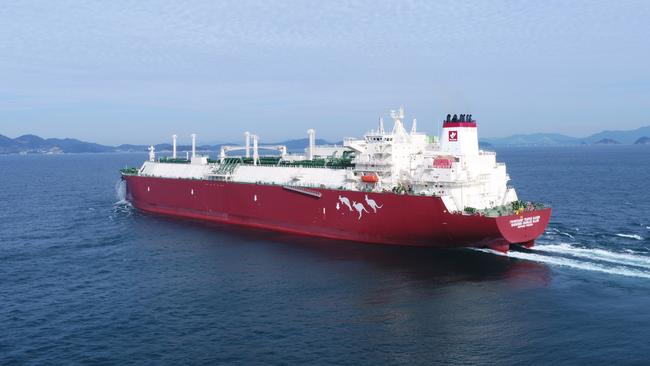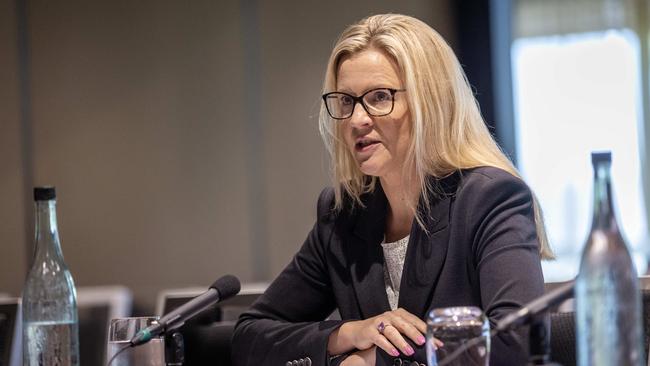Australia’s east coast faces winter gas shortages at least until 2026, says AEMO
Households face a crunch on gas supplies this winter and through to 2026 as traditional supplies plummet on Australia’s east coast.

The east coast faces gas shortages every winter until 2026 with production plummeting from offshore fields and delays in sanctioning several LNG import plants needed to boost supplies.
The shock warning, which follows forecasts of soaring power bills also hitting from July 1, will stoke fears that consumers face another volatile winter after last year’s debacle during which the entire national power market shut down in an attempt to ease an electricity crunch.
The Australian Energy Market Operator, which runs the national electricity and gas system, has forecast a risk of gas shortfalls under extreme weather conditions from winter 2023 in NSW, Victoria, Tasmania, South Australia and the ACT, at a time when average consumer demand can jump up to three times higher than summer.
“The risk of gas shortfalls each year from winter 2023 to 2026 in all southern jurisdictions remains under extreme weather conditions and periods of high gas-powered electricity generation, with those risks further exacerbated if gas storage levels are insufficient,” AEMO chief executive Daniel Westerman said.

A string of energy producers have blamed the Albanese government’s intervention into energy markets for pausing new gas deals. AEMO said given the policy was in its infancy, its effect on consumer gas demand or supply investments “is not yet clear”.
The energy agency also downgraded the nation’s first potential LNG import plant in NSW’s Port Kembla, owned by Mr Forrest, saying it no longer considers the planned facility as an anticipated project, due to a lack of customers.
The project was originally identified by AEMO as averting a near-term deficit by adding an extra 500 terajoules a day of gas into the domestic market ahead of the 2023 winter.
It also pointed to a fresh squeeze for the three Queensland LNG exporters which already face tighter scrutiny from the federal government over supplying into domestic markets.
“From 2026, without additional commitments to expand domestic supply, or alternative developments such as hydrogen or biomethane that may offset natural gas demand, gas contracted for export by Queensland LNG producers may instead need to be used to maintain domestic gas adequacy.”

A dramatic 16 per cent fall in Victorian production capacity this winter compared with a year ago will also add to the squeeze. The crunch is set to intensify in the next few years with Victorian offshore output in 2027 set to dive 49 per cent lower than 2022.
States may be forced to reduce their use gas during extreme peak day events with alternative fuel supplies potentially needed as a back-up on those high demand days.
Energy Minister Chris Bowen’s office said the blame for the situation lay with the former Morrison government.
“The former Government promised a fraudulent gas-led recovery, and instead delivered an energy crisis last winter, including projected gas supply shortfalls as evidenced by the ACCC July 2022 gas inquiry report,” Mr Bowen’s spokeswoman said.
“The former government was warned on at least a dozen occasions that because of their inaction we were hurtling towards a supply problem in the domestic market.”

The gas crunch over recent years has in large part been sparked by the rapid depletion of supply sources in Victoria’s offshore Gippsland Basin along with delays to other key projects including Golden Beach and offshore wells connected to the Otway gas plant.
AEMO called for more investment to be sunk into boosting gas supply.
“To minimise shortfall risks, committed infrastructure and supply projects must be completed on time, while demand-side solutions, additional gas storage and pipeline development, and liquefied natural gas import terminals could potentially play a role,” Mr Westerman said.

“Investments are needed in the near term to ensure operational solutions from 2027, despite falling gas consumption.”
Still, the battle to find new sources of supply looks challenging despite repeated annual warnings about a gap emerging in the market.
A second LNG import plant which Viva Energy wants to develop in Geelong also faces more delays, adding to fears over energy rationing along the east coast, after the Victorian government requested more details before deciding whether to approve the project.
AEMO now assumes the earliest timing to bring Geelong on as 2025 while Mr Forrest’s Port Kembla terminal is forecast for 2026.
The Australian Production and Petroleum Exploration Association, representing large gas producers, said the root cause of gas market shortfalls was inadequate supply and infrastructure.
Governments have received warning after warning from independent authorities about the need for investment in new supply and this latest AEMO warning should not be a surprise,” APPEA chief executive Samantha McCulloch said.
“AEMO has again recognised the uncertain investment environment and the need for governments to enable investment in new gas supply, which can put downward pressure on prices while ensuring the lights stay on for Australian households and businesses,” she said.
“We need a clear strategy from governments to promote new supply rather than ad hoc interventions that have undermined investment confidence.”
While Australia is among the world’s largest gas exporters, a lack of supplies left available for domestic use have forced the nation into the unusual position of having to develop import plants to ensure enough gas can be sourced for local businesses.
Australia’s east coast gas market has been crimped in the past few years due to Queensland LNG exports, onshore development restrictions, falling Bass Strait production, and the increasing cost of bringing new domestic supplies to market.




To join the conversation, please log in. Don't have an account? Register
Join the conversation, you are commenting as Logout